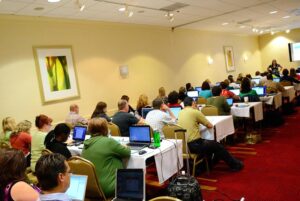Social media can do wonders for spreading the word about your book. Whether you’re getting ready to launch your debut novel or building a platform for your next nonfiction release, using the right social platforms is pretty handy for connecting with readers, building buzz, and making more sales. I’ll walk you through the basics, some real-world strategies, a couple of common hurdles, and a few bonus tips I’ve picked up along the way.
![]()
Contents
- 1 Why Social Media Works for Book Marketing
- 2 Deciding Which Platforms to Use for Your Book
- 3 Getting Started: Building a Strong Social Media Presence as an Author
- 4 Simple Strategies for Spreading the Word
- 5 What to Watch Out For: Common Pitfalls in Social Media Book Marketing
- 6 Advanced Tactics for Authors Ready to Take Things Up a Notch
- 7 How Authors Use Social Media to Build Book Awareness
- 8 Frequently Asked Questions
- 9 Final Thoughts
- 10 Related Articles
Why Social Media Works for Book Marketing
Social media brings together readers and writers from all around the world. Sites like Instagram, Twitter (now X), TikTok, and Facebook let you get your book in front of people quickly, without needing a huge marketing budget. Connecting personally with fans on these platforms helps turn followers into loyal readers.
Back in the day, most marketing happened through book tours, signings, or print ads. Now, social media breaks down those barriers. An author can answer reader questions, offer behind-the-scenes peeks, and create little online events without ever leaving home. Plus, posts can spread organically. One clever tweet or viral TikTok video can reach thousands (sometimes millions) in a matter of hours.
There’s no shortage of platforms out there. Choosing the right ones for your audience and genre is super important for getting the best results.
Deciding Which Platforms to Use for Your Book
Not every social network will help you sell more books, so focusing on the platforms where your readers hang out is step one. Here’s a quick rundown of a few popular choices and how authors often use them:
- Instagram: Great for highly visual content. Share cover reveals, writing updates, aesthetic posts, and quotes from your book.
- Twitter/X: Ideal for short updates, reader engagement, live chats, and participating in trending book hashtags like #BookTwitter and #WritingCommunity.
- Facebook: Still home to lots of book groups and active author pages. Think about hosting virtual events, Q&As, or exclusive giveaways here.
- TikTok (BookTok): Super useful for viral book trends and creative short videos. Use it for recommendations, book trailers, and fun challenges.
- Goodreads: While technically a book review platform, having a strong Goodreads profile adds extra trust. Participate in reader groups and share book updates there, too.
Getting Started: Building a Strong Social Media Presence as an Author
Jumping into social media can feel like a lot, but breaking it down makes things more manageable. Here’s what I found really works:
- Create a Consistent Author Brand: Use the same headshot, handle, or author name across platforms. This makes it easy for readers to find you.
- Set Up Professional Profiles: Take the time to write a solid bio. Mention your book, who it’s for, and add a call to action (like where to buy it!).
- Get Involved With Readers: Respond to comments, ask questions, and join conversations in relevant hashtags and groups.
- Post Regularly: Readers love updates. Even simple posts like progress notes, mood boards, or favouriteI struggled with juggling social media with actual writing early on quotes can help you stay active without burning out.
- Share a Mix of Content: Don’t just promote your book. Share writing tips, personal stories, behind-the-scenes moments, and even photos of your workspace for a natural, relatable feed.
Simple Strategies for Spreading the Word
Once your author profiles are set up, it’s time to get strategic. Here are some starter moves that have given me a lift in reach and engagement:
- Teasers and Cover Reveals: Build anticipation by sharing sneak peeks—book covers, early chapters, or short video trailers.
- Giveaways: Readers love free stuff. Host a contest for ARCs (advance reader copies), signed books, or swag like bookmarks. This can boost shares and attract new followers.
- Team Up With Book Influencers: Reach out to bookstagrammers, BookTok creators, and bloggers for shoutouts or joint events. Even a simple repost can introduce your book to whole new circles.
- Host Virtual Launch Parties: Celebrate your book’s release with a live Q&A, live reading, or themed online party. These events get people talking and sharing.
- Use Hashtags Smartly: Targeted hashtags (#IndieAuthors, #MustRead, #BookLaunch) help your posts get discovered by the right crowd. Mix broad and niche tags for best results.
What to Watch Out For: Common Pitfalls in Social Media Book Marketing
Success doesn’t happen overnight, and social media can come with its share of headaches. Here are some bumps in the road I’ve come across, plus tips for getting through them:
- Feeling Overwhelmed: Trying to manage too many platforms at once is pretty stressful. I stick to two or three I genuinely enjoy, then expand only if I have the bandwidth.
- Low Engagement: Sometimes posts just flop. Changing up the time of day, using new hashtags, or experimenting with content types usually helps. Engagement often grows as you interact with others and remain consistent.
- Negative Reviews or Trolls: Bad feedback stings, but it’s a part of being visible. I respond politely (or not at all), and focus on the positive readers who lift me up.
- Burnout: Social media burnout is real. Scheduling posts ahead or using automation tools like Buffer or Later gives me a break and keeps my account active.
Time Management Tips
I struggled with juggling social media with actual writing early on15-20 minutes daily. I set a timer and spend just 15-20 minutes per day on posting and interacting. This helps me promote my book while keeping distractions in check.
Staying Authentic
Readers can spot forced promotion a mile away. I try to keep things real by sharing a mix of book news, personal tidbits, and honest insight about the ups and downs of writing and publishing.
Advanced Tactics for Authors Ready to Take Things Up a Notch
Once you’ve nailed the basics, you can push your book marketing further with a few extra strategies:
Make the Most of Video Content: Short-form video is super popular right now, especially on TikTok and Instagram Reels. Recording a quick update, sharing your writing process, or even offering a live reading is an eye-catching way to connect and stand out.
Build a Community: Don’t just post—create or join a reader group. Private groups on Facebook, Discord, or even Reddit help you interact directly with superfans, gather feedback, and keep people engaged between launches. Host regular chats or themed discussions to keep the group lively and deepen reader relationships.
Team Up With Other Writers: Cross-promotions and joint events with other authors, especially in related genres, can bring new followers to everyone. Co-hosting a giveaway or group live chat works well for widening your audience, and you may get to share resources or tips with fellow writers.
Check Analytics: Most platforms offer basic insights about what content draws the most engagement. I check these stats regularly and shape my plan based on what gets people talking, whether it’s polls, videos, or personal stories. Over time, you’ll get a sense of what your audience cares about.
How Authors Use Social Media to Build Book Awareness
Real-world examples are always helpful for spotting what works. Here’s how some authors use social media in different genres and styles:
- Fiction Authors: Many share writing prompts, host character polls, or offer sneak peek first chapters to draw in readers pre-launch. Some even put out mood playlists or visual inspiration boards to give readers a taste of the book’s vibe.
- Nonfiction Authors: Posting quick tips, infographics, or statistics from their book helps position them as an expert and creates content worth sharing. Short “did you know?” posts or behind-the-scenes research stories can grab attention in a crowded feed.
- Indie Authors: Sharing their adventure, behind-the-scenesbehind-the-scenes updates, and interacting with emerging reader communities like #IndieAuthor or #SelfPub boosts both sales and support. Many independent authors are open about their process, sharing successes and failures to build trust and draw in fellow writers, too.
Frequently Asked Questions
Here are a few things writers often ask me about social media book marketing:
How early should I start promoting my book?
Answer: As soon as you have a finished manuscript or a release date. Building hype over weeks or even months before launch gets more eyes on your book when it drops. Try sharing your writing process, snippets, or what inspired your story to build anticipation.
Do I need to spend money on ads?
Answer: Plenty of authors succeed with organic posts alone, but small ad campaigns on Facebook or Instagram can help boost visibility, especially leading up to a launch or during a sale. Start small, measure results, and increase your budget if you see promising returns.
What content gets the most engagement?
Answer: People usually respond best to real, personal stories—updates from your writing adventure, behind-the-scenes looks, and fun polls or quizzes. Author-reader chats, giveaways, and videos get lots of action too. Always invite readers to comment or share their thoughts to get conversations flowing.
Final Thoughts
Social media works best for book marketing when it feels genuine and fun, not like a constant sales pitch. For me, it’s about showing up, sharing your adventure, and connecting with readers in a way that feels natural. Finding just the right mix of platforms and content makes a big difference, and over time, those small efforts add up to a wider, more engaged reading community. Stick with it, be yourself, and keep experimenting to see what gets people talking about your book. Everyone’s path is different, so track what works for you and trust the process as you grow your audience and get your story into more hands.




